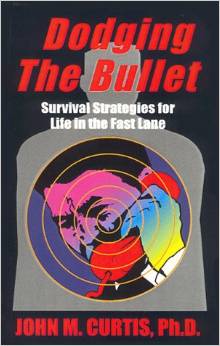Rising gas prices, now over six dollars in California, could hurt 80-year-old President Joe Biden’s chances in 2024, should he decide to follow up with his plans to run for reelection. Recent polls, if they show anything, show a growing consensus among Democrats, Republicans and independents, the Biden isn’t fit to run the country for four more years, let alone now. But rising gas prices hit consumers where it hurts, diminishing the disposable cash needed to fuel the consumer economy. Biden dodges what created the world’s latest oil shock, with the price of crude oil hovering at $90 a barrel. When Biden decided Feb. 24, 2022 to boycott Russian oil in response to the Ukraine War, widespread shortages and skyrocketing pump prices fueled the worst inflation in over 40 years. Not since the waning days of former President Jimmy Carter, has the U.S. seen such runaway inflation.
So far, the Commerce Bureau shows that U.S. consumers continue to fuel the consumer economy with retail sails up 0.6% in August, a surprise to many economists. But retail sales are directly affected by rising gas prices, a major source of retail sales activity. So, when it comes to big-ticket consumer purchases, whether cars or major appliances, sales were actually flat or declining. How ironic that gasoline sales factor into the retail sales data, anticipating more driving in the summer months, especially August for family vacations. “Oil prices have rallied, and for policymakers, this could be a blessing in disguise,” Morgan Stanley’s Elen Zentner wrote in a note to clients. “We find that an increase in energy prices from negative supply shocks has only a small pass-through to core CPI while weighting on spending,” saying that retail spending could head downward in the future.
Federal Reserve Board’s Open Market Committee [FOMC] could stop its pause hiking interest rates, noting that rising gas prices could fuel more inflation. Consumers can’t take too much higher Federal Funds Rate now at 5.33%, driving the Prime Interest Rate to 8.5% and mortgage interest to over 7% for the last month. It’s a matter of time before the mighty U.S. housing market slows down to the point it also affects consumer spending, a precursor to slowed Gross Domestic Product [GDP]. Zentner thinks rising gas prices could lead the Fed to pause at its next FOMC meeting Sept. 27. When the FOMC meets later this month, Fed Chairman Jerome Powell could hike another 25 basis points, driving up the Discount Rate and Prime Interest Rate. Rising gas prices have disastrous consequences for 80-year-old President Joe Biden who takes the political heat from voters, already feeling the pinch,
Today’s Consumer Price Index [CPI] rose .4.3% in August, down from 4.6% in July, but not taking into account the core inflation doesn’t include volatile food and energy prices, both weigh on consumers. Food, gas and rent are the biggest costs consumers face at any time, so when pump prices rise it affects how consumers spend what’s leftover at the end of the month. Biden’s Russian oil embargo fueled the current inflationary cycle that left the FOMC no choice but to hike rates. Whether Biden ends the Russian oil embargo or not, OPEC, led by Russia and Saudi Arabia, continue to cut production, leaving oil prices at around $90 a barrel. But higher gas and diesel prices translate into higher transportation costs, also contributing to higher prices. Prices don’t usually come down until an economic slowdown pushes the GDP into recession, something that hasn’t happened yet.
When the FOMC meets Sept. 27 they’ll most likely keep interest rates on hold, not knowing how consumer spending will go in the next few months. With the holiday season approaching, consumer spending could stay strong for the rest of the year, despite the rise in gas prices. Rising fuel prices don’t translate into inflationary prices, something taking months to develop. “High energy prices must be sustained for some time to have a greater, more durable effect on core prices,” Zentner said. “The Fed will look through his shock,” hesitant to raise rates in September. No question that the 0.6% jump in retail spending was attributable to rising gas prices. As energy prices rise for consumers they start to cut back in other purchase, something that won’t impact GDP for another quarter. With Biden already depleting the federal petroleum reserve to lower gas prices, there’s no room for more.
When the FOMC meets in September, look to the Fed to keep interest steady until they get new inflationary data. Goldman Sachs managing director Katie McShane says it could take months for consumer spending, based on inflated energy prices, to slow down, leading the Fed to start slashing rates. What happens with the Student Loan moratorium ending Oct. 1 is anyone’s guess. But if student borrowers are forced to resume making payments, it could also, together with higher gas prices, reduce future consumer spending, eventually causing a mild recession. If Wall Street starts to sell off, it could also drag the economy into recession, forcing the FOMC to start aggressively slashing interest rates. For the time being, rates should stay steady in September, waiting to see its impact on consumer spending. High gas prices are certainly a deceptive factor in last month’s retail sales spending.
About the Author
John M. Curtis writes politically neutral commentary analyzing spin in national and global news. He’s editor of OnlineColumnist.com and author of Dodging The Bullet and Operation Charisma.



